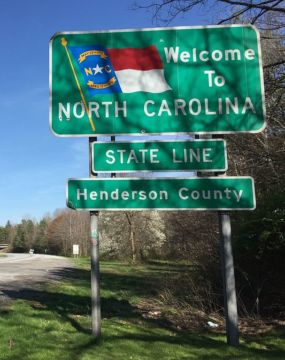Welcome to our blog
Keep up with our latest demographic insights

Note: This is second in a series of posts on county health rankings from the Robert Wood Johnson Foundation. The first post on Length of Life can be found here. The Robert Wood Johnson Foundation (RWJF) releases annual county rankings on different aspects of community wellness across five major categories – Length of Life, Quality of Life, Health Behaviors, Clinical Care, and Social and Economic Factors. This blog focuses on Quality of Life measures in…

The Robert Wood Johnson Foundation (RWJF) releases annual health rankings at the county-level for each state in the nation. These rankings are divided into categories measuring different aspects of community wellness: Length of Life, Quality of Life, Health Behaviors, Clinical Care, and Social and Economic Factors. Each factor is calculated by one or more markers of wellness – each deserving of a separate blog. This blog will focus on Length of Life in North Carolina…

From 2010 to 2017, 247 North Carolina municipalities experienced population decline – approximately 45% of all cities, towns, and villages in the state. This represents an increase of 22 municipalities since last year’s population estimates were reported. After accounting for municipalities growing at a stagnant pace – below the state growth rate of 8% - this figure rises to 427 in total. This means that over three-fourths of all places are declining or growing slower…

There are currently over 210,000 grandparents living with their own grandchildren (under age 18) in North Carolina, according to the 2012-16 American Community Survey 5-year Estimates. This is approximately 3.5% of the adult population 30 years and older. Of those living with their grandchildren, slightly less than half of grandparents (46%) were primary caregivers, meaning they had financial responsibility for the basic needs of grandchildren in their household. For many individuals, this is a long-term…

Population estimates from July 1, 2016 to July 1, 2017 indicate that growth may be more concentrated around urban centers than suggested by last year’s estimates. Many of the top 10 fastest-growing municipalities from 2015-2016 were exurbs – largely rural areas located a greater distance from a metro center. They were thought to be possibly absorbing suburban overflow. The majority of these municipalities had previously seen slim annual population growth from 2010-2015, and eight out…

Topline data from the Census Bureau’s recently released 2017 municipal population estimates shows little change from previous years’ estimates. Municipalities located near major metropolitan areas continue to grow, while North Carolina’s rural communities continue to experience population decline. 255 NC municipalities, or 46%, have experienced either population decline or zero-percent growth since 2010. Adding municipalities with stagnant growth – i.e. those that grew slower than the state growth rate of 8% - this totals over…

Migration is the major source of North Carolina’s population growth. What states send North Carolina the most migrants? The Census Bureau releases annual estimates on domestic and international migration flows for residents of the United States and Puerto Rico. American Community Survey respondents provide details on their place of residence one year ago and the state in which they currently live. The top 10 highest contributing states for North Carolina’s in-migrants in 2016 were Virginia,…

Just over 666,000 veterans lived in North Carolina in 2016 according to the most recent American Community Survey estimates. This is a decrease of roughly 15,000 veterans or -2.2% from 2013, the year we last profiled North Carolina’s veterans. Nationally, the veteran population decreased at an even faster rate over this time (-5.6%). The U.S. veteran population declined from 19.6 million in 2013 to 18.5 million in 2016, a loss of 1.1 million veterans. While…

Demographic changes in the composition of North Carolina’s child population will likely introduce new challenges to reaching any goal of increasing statewide educational attainment. In Fall 2017, 44 percent or 674,000 North Carolina public school enrollments were black, Hispanic, or American Indian students. Over the past 5 years, this group of students has grown twice as fast as the overall student population and is projected to continue to grow steadily for the next 5-10 years.…

Once every 10 years, we count all individuals living in the United States in the census. In 2010, respondents were asked ten questions about basic characteristics, such as age, sex, race, and homeownership status. Last week, Secretary of Commerce Wilbur Ross announced that census respondents will answer one additional question in 2020: citizenship status. Introducing an additional, untested question so late in the census life cycle is concerning to demographers and social scientists, like me,…
Your support is critical to our mission of measuring, understanding, and predicting population change and its impact. Donate to Carolina Demography today.